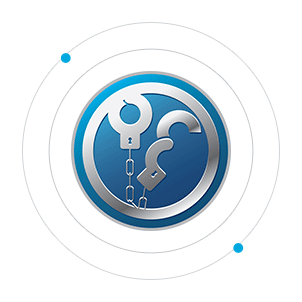Ecommerce Scams: How They Work
Ecommerce scams come in many forms, including friendly fraud, account takeover, and card cracking. We'll see what these are in a second, so you learn how to stay safe online. The best way to minimize the effects of eCommerce swindling on your business is to understand the type of fraud and its source.
Ecommerce fraud has increased proportionally to the number of sales. Therefore, it is crucial for ecommerce stores to adopt fraud management systems to identify and mitigate suspicious activities while controlling chargeback disputes. Here is a breakdown of what eCommerce fraud is, common forms of it, and some practical ways to protect your store.
Scam Detectors Most Trusted Websites in Online Security
- Guard.io (100): Surf the web safely. Clean up your browser, remove maliscious extensions and check for privacy violations.
- Incogni.com (100): Delete your personal data from the internet and protect against scams and identity theft.
- ExpressVPN (100) Stay secure and anonymous online - Best VPN Out There

What Is Ecommerce Fraud?
This is any form of fraud committed on an eCommerce platform. Examples of eCommerce scams include using a fake credit card, affiliate fraud advertising, and using a false identity. Whenever a customer is involved in eCommerce fraud, your retail shop will incur this cost, which will adversely impact your revenue.
Fraudsters execute online fraud with credit cards and personal information. Furthermore, the card does not necessarily have to be present for the transaction to be successful. In many cases, cybercriminals steal data and make profits from it on the black market.
One of the reasons eCommerce fraud is widespread today is because the perpetrators are rarely brought to justice. It is crucial to integrate prevention management and fraud detection systems to address fraud on your online store and minimize its effects on your revenue.
6 Common Types of Ecommerce Scams
Addressing fraud involves identifying its cause and developing prevention measures that will help you secure your online store. You need to identify the form of fraud occurring in your online store and deal with it directly. Here are the most common forms of eCommerce fraud.
1. Card Testing Fraud
Card testing fraud (also known as card cracking) is a widespread tactic used to defraud eCommerce businesses. In 2017, for instance, card testing fraud jumped by more than 200 percent, accounting for 16 percent of all eCommerce scams and 7 percent for larger eCommerce merchants.
Although they have credit card numbers, they are not familiar with whether the numbers can complete a transaction or the credit card limit. Cybercriminals will visit the online store and make small test purchases using bots or scripts to test the credit card numbers.
After they confirm that a credit card is working, they will start using them for more expensive purchases. Many people realize they are victims of card testing fraud when massive purchases take place using their credit cards.
2. Friendly Fraud
Friendly fraud occurs when a person purchases items online and claims the purchases were invalid. The cybercriminal then requests a refund from the payment processor. The credit card company then returns the money to the fraudster.
In friendly fraud, the criminal can receive items for free. For example, a fraudster can buy an item online and claim they never received the item. They may also claim they returned the item or canceled the order, but they never got a refund. You can guard yourself against chargeback fraud by using chargeback management software to minimize fraud and manage disputes.
3. Refund Fraud
Refund fraud occurs when a criminal uses a stolen credit card to purchase items on an eCommerce site. The fraudster requests to get reimbursed because of an accidental overpayment. The fraudster will claim that their credit card is closed and be refunded through an alternative method. The eCommerce business will be responsible for paying this fraudulent card owner. The cybercriminal aims to steal from your eCommerce site.
4. Account Takeover Fraud
Account takeover fraud arises when a person accesses a user's account on an online store. This is achieved by purchasing a stolen password or personal information or security codes on the dark web.
When the fraudster has access to a user's account, they can make purchases, withdraw funds, or access other customer accounts. Account takeover fraud is identity theft that could tarnish the reputation of your online store.
5. Interception Fraud
Interception fraud occurs when a cyber-criminal makes an order on an online store with a billing address and shipping address that matches a stolen credit card's information. After the order is placed, the fraudster will try to intercept the delivery and take the goods.
First, the fraudster will ask a customer support staff to change the address on the order.
The fraudster's goal is to receive the goods while the credit card owner makes the actual payment for the goods. They may even ask the shipper to take the package to a different address.
6. Triangulation Fraud
Triangulation fraud involves different actors: the fraudster, a shopper, and the online store. The fraudster will create a storefront on Shopify, Amazon, or other platforms that sell goods at competitive prices. This eCommerce store attracts legitimate customers who are looking to buy items at affordable prices.
When a customer places orders on the storefront, the fraudster will use their stolen credit card numbers to purchase legitimate goods from your online store and then send them to their customers.
In this case, the real victims are not the fraudster's store customers but those whose credit cards have been stolen and your eCommerce site. Your online store will ship actual items to the fraudster who uses stolen credit card information to make orders.

How To Fight Back Against Ecommerce Scams
The following are some of the ways you can protect your business from eCommerce scams.
1. Use Fraud Detection Solutions
These are third-party solutions that identify suspicious transactions and protect online merchants from friendly fraud, card testing fraud, and chargeback fraud. These solutions are helpful for online stores of all sizes. You can use fraud detection applications if you do not have the time, talent, or resources to implement your fraud systems.
2. Maintain PCI Compliance
The Payment Card Industry Data Security Standard is a security framework that helps merchants and other service providers to protect their credit and debit card transactions from fraudsters. PCI DSS is an industry mandate. Therefore, if your business accepts credit card payments, you must ensure you comply with PCI DSS.
3. Exercise Caution During Special Dates
Many people buy using eCommerce stores for Cyber Monday, Black Friday, Mother's Day, or December holidays. Customers are also very susceptible to cybercriminals and will often fall for spyware, DDoS attacks, phishing attacks, malware, and other cyber threats. Many fraudsters depend on reckless behavior to identify potential fraud. During the holiday months, be cautious when receiving rush orders, foreign orders, and small-dollar purchases.
4. Create Blacklists
If you are using a fraud detection solution, you will start to notice customers who have tested credit cards with your online store. After you find these clients, put them on a blacklist. This bans these customers from future purchases on your eCommerce business. A blacklist allows you to flag fraudulent transactions before they materialize.
How To Report a Scammer
Warn your family and online friends about these ecommerce scams by sharing this article. You can also officially report scammers and any other suspicious activities to the FTC (Federal Trade Commission) using this link.
How To Protect Yourself More
If you want to be the first to find out the most prevalent scams every week, please subscribe to the Scam Detector newsletter. You'll receive periodic emails – all quality, no spam.
Verify a website below
Are you just about to make a purchase online? See if the website is legit with our validator:
vldtr®


TOP 4 MUST-WATCH FRAUD PREVENTION VIDEOS
1. Top 5 Amazon Scams in 2024 2. Top 5 PayPal Scams in 2024 3. How To Spot a Scam Email in 2024
- Latest Posts by Selma Hrynchuk
-
How To Stop Robocalls
- -
Taking Control of Your Data Privacy: Protecting Yourself in 2024
- -
The Urgency of Removing Personal Information from the Internet
- All Posts














wal mart online being used for e commerce scam all out of that dirty pig country china
Motionrc.eu and motionrc.com are scam.
I have ordered a RC Jet.after we installed the battery.
but motors can not working.
we have contacted the workers of motionrc.there is no one reply message.
we have to ship back the package.
then we ask PayPal refund 500(USD).
the shipping fee is 120(usd) for shipping back. we have got nothing.and lost 120(USD). please don’t order anything at motionrc. it is scam.waste my time.waste my money.
we have called Police man to get me.
thanks
mind display thru wal mart online …scam